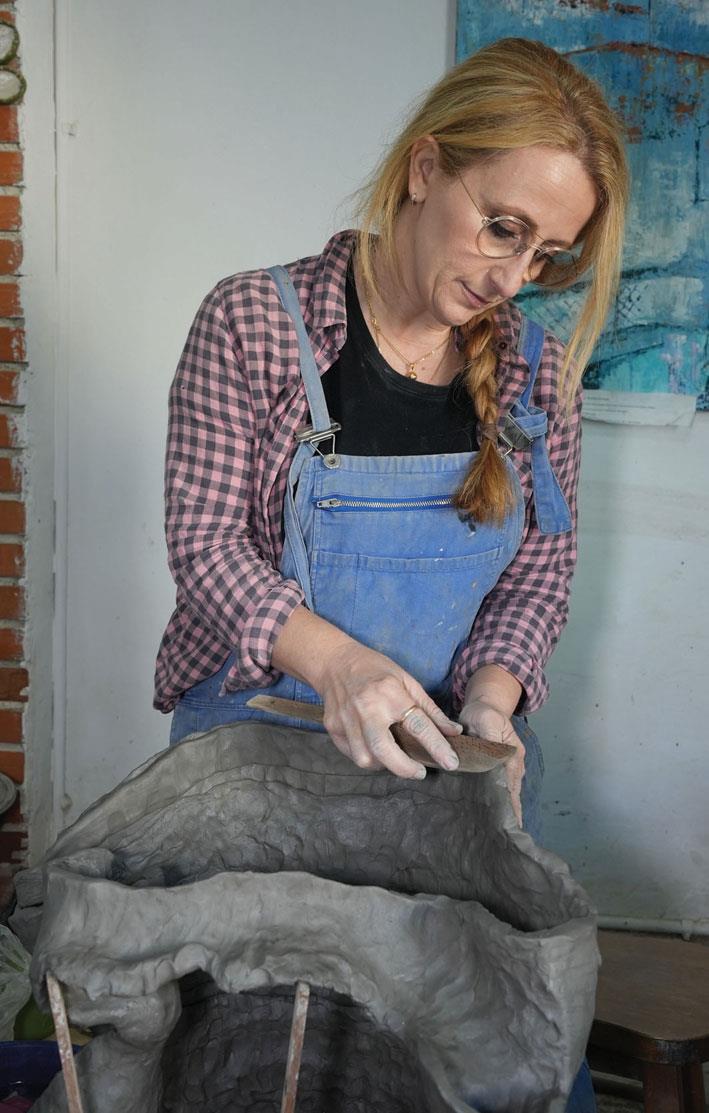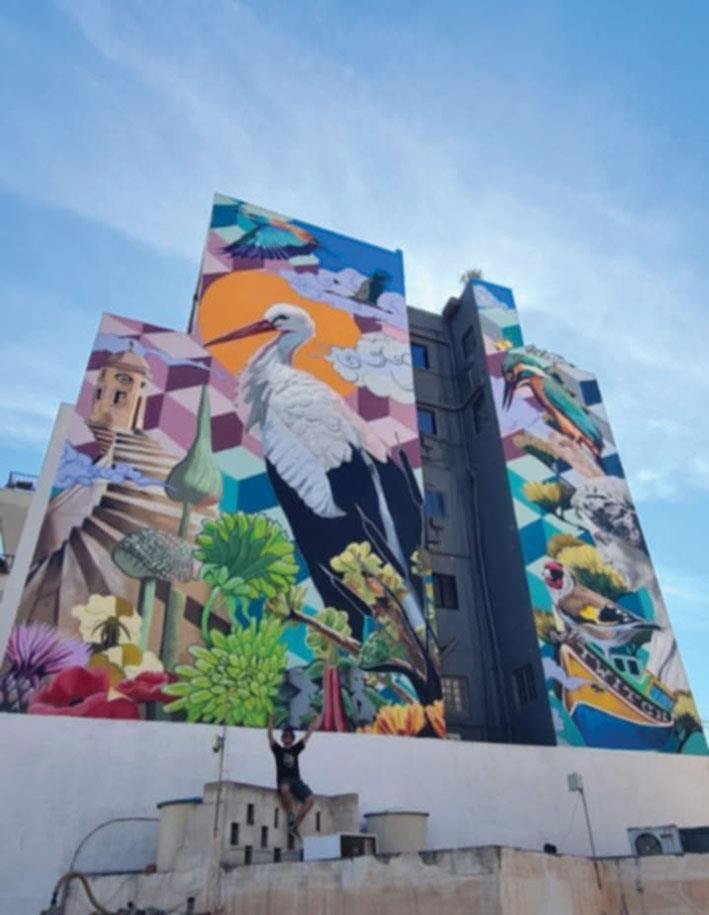Today there is an ongoing debate on social media about how democracy works in Malta. Unfortunately, very few contemporary artists worked on themes related to democracy, socio-political issues, identity, language, systems of power and cultural memory. Among these artists one can mention Vince Briffa, Raphael Vella, Pierre Portelli, Ruth Bianco, Kristina Borg, Norbert Francis Attard, Alex Attard, Andrew Borg Wirth, and some others.
When we come to give a definition of democracy in the Maltese context, the major idea in the mind of many people is that a modern democracy is representative democracy where citizens elect their representatives through elections. But this is not enough. Although democracy seems to be the best system, one needs to include types of freedom that give space to everyone in a society. This includes freedom of speech, movement, belief and association.
Before we discuss the definition of Art and Democracy in the Maltese context, we need to understand the central idea of how art functions as a democratic tool in Malta. Jacques Rancière's concept in his now famous the "distribution of the sensible" in The Politics of Aesthetics (2004) is particularly relevant. He asserts that aesthetics is central to politics, as the social and political system is founded on this distribution, making it an aesthetic order in a broad sense.
On the other hand, John Dewey suggests that art serves as a medium for public engagement and dialogue, reflecting and shaping the community's values and experiences. In his book, Art as Experience (1934), he argued that art is deeply tied to democratic participation because it emerges from and contributes to communal life. He saw art not as an isolated aesthetic object but as an active development that involves both the creator and the audience in a shared experience.

Art as a reflection of democratic values
When we discuss how democracy allows artistic freedom and plurality of expression, we find that in 2023 the Maltese Parliament unanimously approved a new bill aimed at strengthening freedom of artistic expression. The bill was passed following a series of events which ended up in front of the judiciary. This law is now "to provide for the enhanced protection of artistic expression and in particular to provide for the avoidance of the misuse of the criminal justice system for the suppression of such form of expression".
In Malta, various forms of art have been utilised to challenge political opinions and stimulate public discourse. Well-known examples include cartoons and satirical billboards, carnival floats which criticise politicians and social issues. In Malta we have a long history and tradition of Maltese cartoonists using satire to critique political figures and decisions. A few newspapers publish graphical imagery advocating for social justice or LGBTQ+ rights and other issues of a social or religious nature. Prominent cartoonists, who published in past years were Maurice Tanti Burlò (1936-2014), also known with the pseudonym Nalizperla and in recent times Steve Bonello, Seb Tanti Burlò and Ġorġ Mallia, who is a communications academic, known for his socio-political comic strips that offer commentary on local politics. Maltese street artists have also created works that address social and political issues. One artist noted that street art and murals became a way to voice opinions on injustices and provide a broader perspective on societal issues. Perhaps the most prolific street artist is James Micallef Grimaud, who today merges Street and Fine Art into one.

Connection to the role of public art in democratic participation
Malta is widely recognised for its rich cultural heritage and democratic identity; however, many local sociologists and cultural theorists argue that these concepts often lack clear definition and consistency. Efforts to contribute to the democratic engagement by a few institutions is felt through the launching of projects for artists to contribute to the democratic engagement of the country. For example, Muża (Malta's National Community Art Museum) is now featuring a community-driven art initiative like Grotto Girl by internationally-renowned, Maltese-Australian artist, Louisa Chircop who is currently working on a residency project to promote dialogue and inclusion. The project explores identity and belonging, inviting both the Maltese community and international participants into a meaningful dialogue about heritage, connection and shared experiences.
Hannah Arendt (1906-1975), philosopher and thinker, viewed art as a crucial element of the public sphere, where individuals engage in discourse and collective meaning-making. Although she does not discuss specifically art, Arendt saw art as something inherently tied to human freedom and the public realm. The Arts provide a space for individuals to express themselves and participate in a collective conversation about shared values, making it a key element of democratic life.
Challenges to artistic freedom
I am now reflecting on the emotional and cognitive processes that shape how Maltese artists engage with democracy. From a psychoanalytic and psychological perspective, this involves exploring themes of fear, resistance, repression and collective consciousness in Maltese artistic expression.
Although, as previously mentioned, there is a legal framework that supports the freedom of artistic expression, questions still arise when artists confront issues of democracy in practice. Are Maltese artists hesitant to engage with themes of democracy and the current socio-political climate? If so, why?
The reasons for this hesitation could stem from a lingering fear of political repercussions, self-censorship or unconscious pressures that shape an artist's willingness, or unwillingness, to address democracy. I believe that an underlying trauma within the collective Maltese consciousness continues to prevent artists from engaging directly with political themes.
Yet, we know that art has the power to break psychological barriers, acting as a form of catharsis and social awakening. As Julia Kristeva suggests, art functions as a space where the repressed and the unspeakable resurface, challenging both personal and collective consciousness. In Powers of Horror: An Essay on Abjection (1980), Kristeva describes how societies suppress uncomfortable truths, and how artists play a crucial role in bringing these repressed fears into public discourse. If an underlying trauma exists within Maltese society, whether tied to historical memory, governance or national identity, shouldn't art be the medium through which it is processed and made visible?
If democracy thrives on dialogue and the courage to question, should artists not be at the forefront of this conversation? Perhaps the question is not whether Maltese artists are afraid, but whether they are ready to face the collective truths that democracy demands.
Additionally, the role of social media in amplifying or restricting democratic art must also be considered, as it shapes the ongoing dialogue between art, freedom and governance. Ultimately, artistic freedom remains a cornerstone of democracy, demanding constant engagement, critique and reinvention.
Professor Louis Laganà PhD (Lough) is an academic, curator and practising artist
